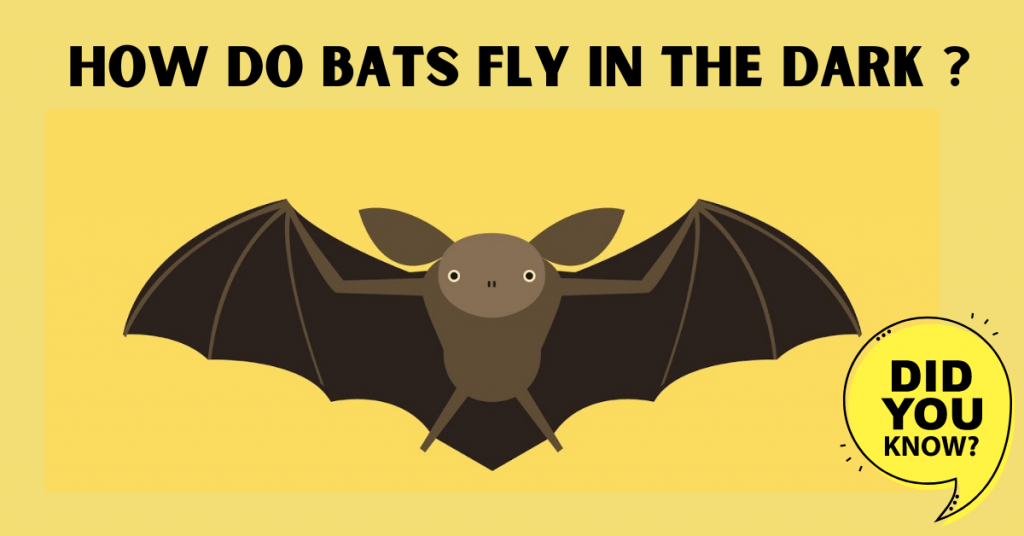
Introduction:
Bats, the only mammals capable of sustained flight, have long intrigued scientists and nature enthusiasts alike. What sets them apart from other flying creatures is their remarkable ability to navigate and hunt in complete darkness. In this extensive exploration, we will delve into the fascinating adaptations that enable bats to fly in the dark, using echolocation as a sophisticated biological sonar system.
- Echolocation: The Key to Night Navigation: The primary mechanism that empowers bats to navigate and hunt in the dark is echolocation. Echolocation is a biological sonar system that involves emitting high-frequency sound waves and interpreting the returning echoes to create a detailed mental map of the surroundings. Bats produce these ultrasonic calls through their larynx or nose, and they can emit up to 200 calls per second.
- Ultrasonic Calls: The Language of Bats: The ultrasonic calls emitted by bats are typically beyond the range of human hearing. These high-frequency calls bounce off objects in the environment, and the returning echoes provide crucial information about the distance, size, shape, and even texture of those objects. This sophisticated use of sound allows bats to construct a mental representation of their surroundings, enabling them to fly, navigate, and hunt in complete darkness.
- Adaptations in the Ear: Bats have evolved specialized ears capable of detecting and processing the faintest echoes. Their ears are finely tuned to the frequency of their echolocation calls, allowing them to distinguish subtle variations in echo patterns. Additionally, many bats can adjust the frequency of their calls to match the specific characteristics of their environment, optimizing their ability to gather information from echoes.
- Sophisticated Brain Processing: The information gathered through echolocation is processed in the bat’s brain with remarkable speed and precision. The auditory regions of a bat’s brain are highly developed, allowing them to create a detailed mental map of their surroundings in real-time. This rapid processing is essential for making split-second decisions during flight and while hunting prey.
- Hunting in the Dark: Bats use their echolocation abilities not only for navigation but also for hunting. They can detect the presence, size, and even species of prey in complete darkness by analyzing the echoes produced when their calls bounce off potential targets. This unique adaptation allows bats to forage for insects, navigate dense vegetation, and locate prey with incredible accuracy.
- Different Echolocation Strategies: There are two main types of echolocation strategies among bats: frequency-modulated (FM) and constant-frequency (CF). FM bats emit calls that sweep through a range of frequencies, providing detailed information about their surroundings. CF bats, on the other hand, emit constant-frequency calls and rely on detecting Doppler shifts in the returning echoes to determine the movement of their prey.
- Evolutionary Success: The ability to fly and navigate in the dark through echolocation has been a key factor in the evolutionary success of bats. With over 1,400 species of bats worldwide, they occupy a diverse range of ecological niches, from rainforests to deserts. Their adaptability and reliance on echolocation have made them a highly successful and widespread group of mammals.
- Challenges and Limitations: While echolocation is a highly effective strategy, it does have its limitations. Bats may struggle to detect small, motionless objects, and certain environmental conditions, such as heavy rain, can interfere with their echolocation signals. However, their adaptability and use of additional sensory cues, such as vision and smell, contribute to their overall success as nocturnal navigators.
Conclusion:
The ability of bats to fly in the dark through the use of echolocation stands as one of the most extraordinary examples of biological adaptation in the animal kingdom. Echolocation not only allows bats to navigate their surroundings with incredible precision but also serves as a highly effective tool for hunting and locating prey. The evolution of this sophisticated sonar system has propelled bats to the forefront of nocturnal exploration, enabling them to thrive in diverse habitats around the world. As we continue to unravel the mysteries of bat echolocation, we gain deeper insights into the remarkable ways in which nature equips its creatures for survival in the dark realms of the night sky.